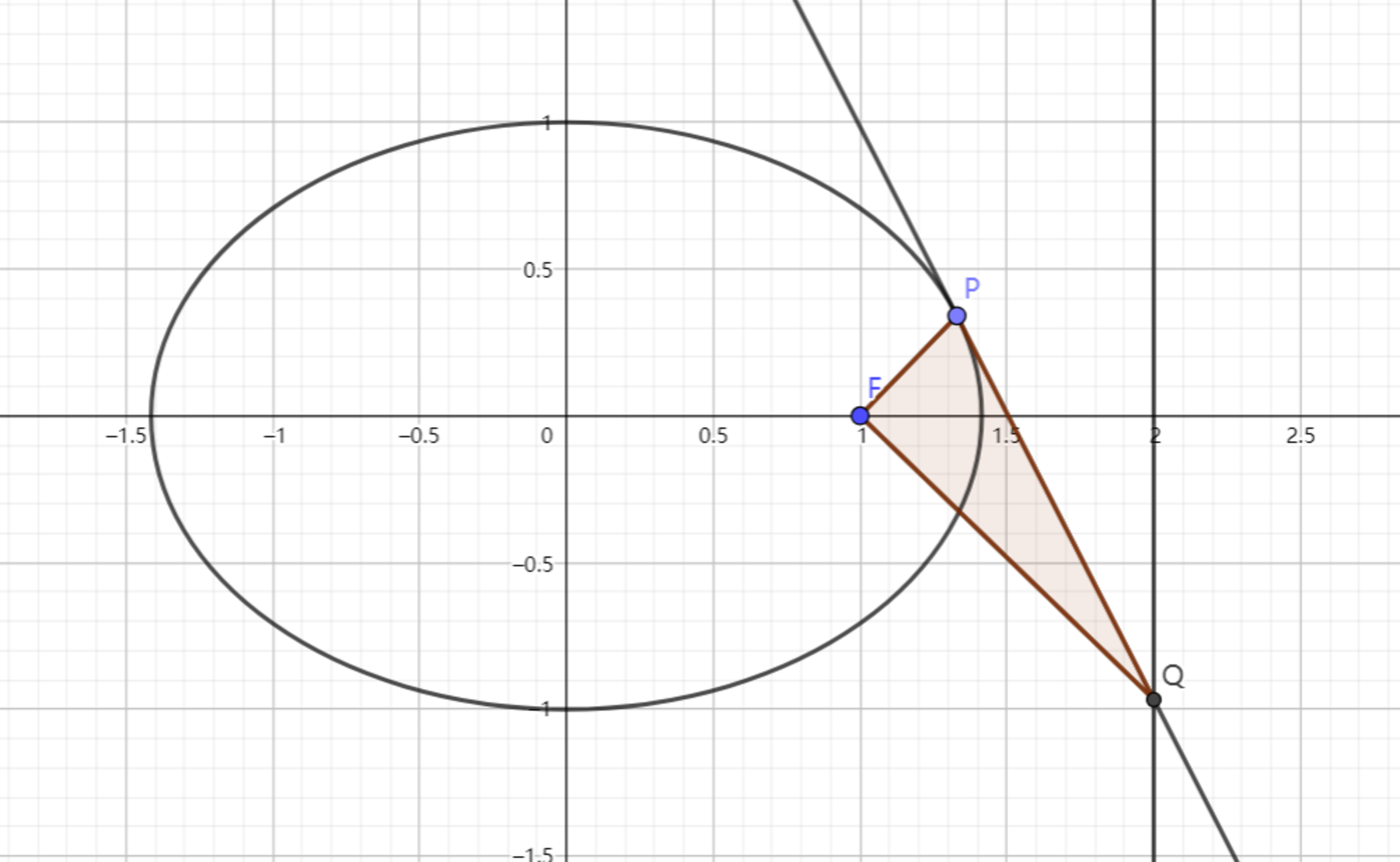Ellipse's tangent and minimum area

Given that ellipse has the equation: and point is its right focus, is a point on the ellipse and the tangent line passing through intersects with the line: at point , as shown above.
If is above the -axis, and has the minimum area, is the slope of the tangent line, find .
The answer is 16180.
This section requires Javascript.
You are seeing this because something didn't load right. We suggest you, (a) try
refreshing the page, (b) enabling javascript if it is disabled on your browser and,
finally, (c)
loading the
non-javascript version of this page
. We're sorry about the hassle.
Let the coordinates of P be ( p , q ) . Since rearranging 2 x 2 + y 2 = 1 gives y = 2 1 4 − 2 x 2 , the coordinates of P are ( p , 2 1 4 − 2 p 2 ) .
By implicit differentiation on 2 x 2 + y 2 = 1 , x + 2 y d x d y = 0 , or d x d y = − 2 y x . The slope of the tangent line at P is then k = − 2 q p = − 4 − 2 p 2 p , and its equation is y − 2 1 4 − 2 x 2 = − 4 − 2 p 2 p ( x − p ) , or y = 4 − 2 p 2 − p x + 2 .
Q is the intersection of x = 2 and y = 4 − 2 p 2 − p x + 2 , so its coordinates are ( 2 , 4 − 2 p 2 2 ( 1 − p ) ) .
The slope of F P is m 1 = p − 1 2 1 4 − 2 p 2 − 0 = 2 ( p − 1 ) 4 − 2 p 2 , and the slope of F Q is m 2 = 2 − 1 4 − 2 p 2 2 ( 1 − p ) − 0 = 4 − 2 p 2 2 ( 1 − p ) .
Since m 1 ⋅ m 2 = 2 ( p − 1 ) 4 − 2 p 2 ⋅ 4 − 2 p 2 2 ( 1 − p ) = − 1 , ∠ P F Q is always a right angle.
The distance F P = ( p − 1 ) 2 + ( 2 1 4 − 2 p 2 − 0 ) 2 = 2 p − 2 and the distance F Q = ( 2 − 1 ) 2 + ( 4 − 2 p 2 2 ( 1 − p ) − 0 ) 2 = 2 − p 2 p − 2 .
The area of right triangle △ P F Q is then A = 2 1 ⋅ 2 p − 2 ⋅ 2 − p 2 p − 2 = 2 4 − 2 p 2 ( p − 2 ) 2 .
Since d p 2 d 2 A > 0 , the minimum area occurs when d p d A = 2 ( p 2 − 2 ) 4 − 2 p 2 ( p − 2 ) ( p 2 + 2 p − 4 ) = 0 , which solves to p = 5 − 1 for − 2 < p < 2 .
Since k = − 4 − 2 p 2 p and p = 5 − 1 , k 2 = 2 1 + 5 = ϕ and ⌊ 1 0 0 0 0 k 2 ⌋ ≈ 1 6 1 8 0 .